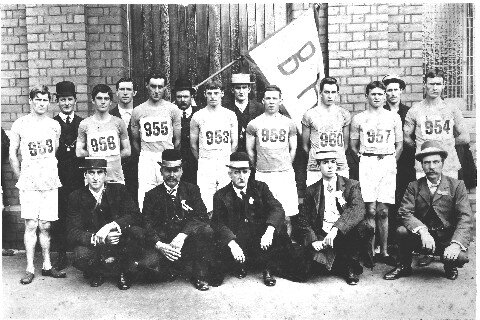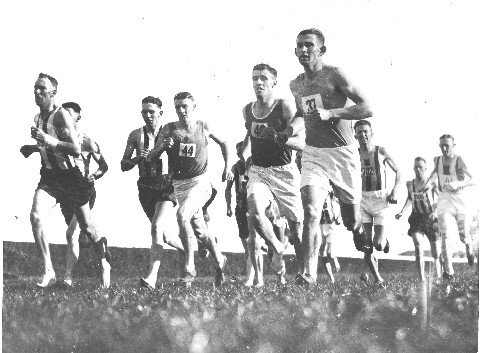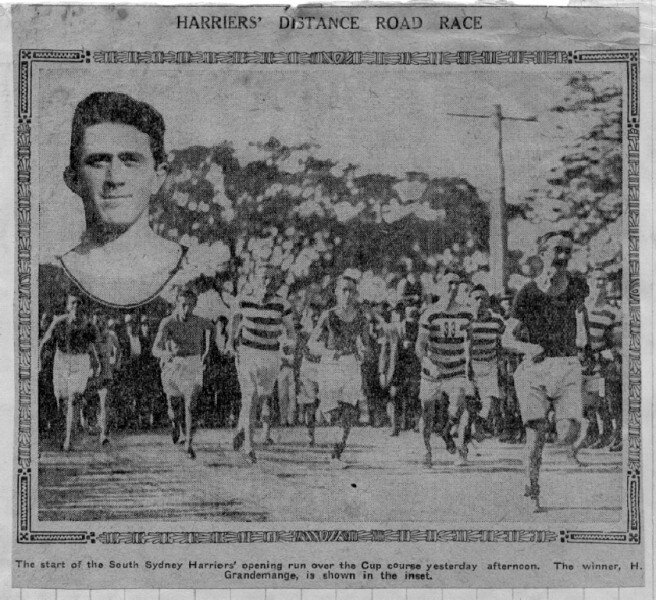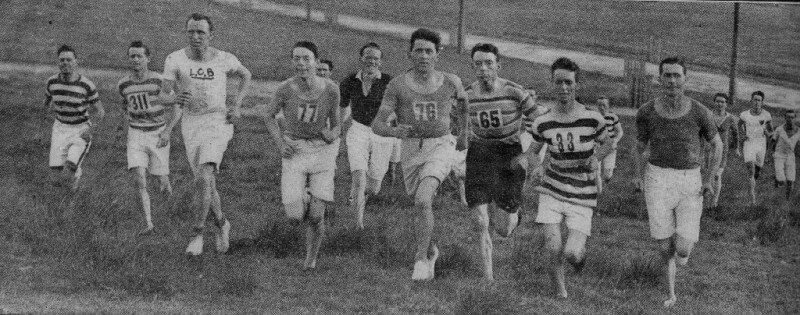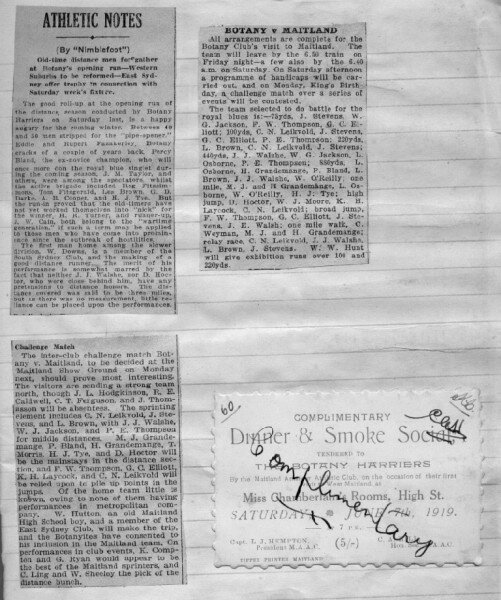RBH - The Club That Has Been to 20 Olympics
Detail from the front of Fixture Card - Winter 1920
For twenty years from 1884 professional athletics events were conducted in Botany. However, the handicap system brought the footrace into dispute. When interest in athletics revived, it was on an amateur basis. In 1907, the Botany Harriers was founded. (The original Botany Harriers 'Minute Book' 1907-1909 can be downloaded from HERE.) Within a year the club had won the long-distance teams’ championships, doing so from 1908 to 1920 (The Great War postponed the competition for 3 years). In the 1920s the club began to star in track and field. A women’s and junior boys' section was added in 1926. The women’s club possessed the outstanding female athletes of the 1930s. The Harriers provided many athletes for state and national representation. By way of example, ten male and two female athletes represented Australia in the 1938 British Empire Games in Sydney.
From 1945 the various athletic clubs began to sponsor schoolboy championships with a view to encouraging the sport and boosting membership. Having no secondary schools in the area until 1961, Botany could not participate in this development. As a result, Botany schoolboys were drawn into other clubs. As Randwick-Kensington was in a similar dilemma, the two clubs amalgamated in 1959, thereby gaining a larger area containing several large secondary schools. (Prior to this, Randwick and Kensington clubs had amalgamated in 1932.) The Randwick Botany Harriers and the Randwick Botany Women’s Amateur Athletics Club merged in 1983.
Every athletic club desires its own athletics field. Towards this end, Randwick-Botany established a social club in 1963 and built licensed premises on Wentworth Avenue, Pagewood, partly as a means of financing an athletics field. The club leased an old tip site at Pagewood from Botany Council and was able to provide a local ground for athletics. A driving force behind this venture was C.D ‘Chic’ Hensley after whom the ground was named. He also led the establishment in 1968 of the first Little Athletics club in NSW, the Randwick-Botany Little Athletics Centre, which uses the venue to this day. Hensley Athletic Field was re-laid with a synthetic Tartan track for the Commonwealth Games trials in 1973. It was the first synthetic track in Australia and featured the first straight 200m. This was a monumental contribution to athletics in NSW. It was the club’s base for several decades. In 1982 the field was handed back to Botany Council.
Allan Lawrence receives his bronze medal, 10,000 metres, Melbourne, 1956
Across a twenty-year period from the early 1960s, the club won the men’s A grade interclub track and field premiership on 17 occasions. In recent decades the club has enjoyed a resurgence in its long-distance section, winning multiple consecutive winter Men’s A grade club points scores in the 1990s and 2000s. One glowing achievement was winning the Open Men’s NSW road relay eleven years in a row, 2006-2016. At the same time, the club has developed a strong and expanding female and male junior base, especially but not exclusively in middle distance events, through the great work of our outstanding coaches. In 2022 the club won ANSW Winter Club Trophy.
As of 2023, the club has been represented at an amazing 20 Olympic Games by 26 Olympians, in a sequence from 1924 to 2020 (2021), broken once only in 1992. See our HALL OF FAME. It is unlikely that any other Australian athletics club has had such Olympic representation. Moreover, less than a fifth of Olympic nations have been to 20 games!
Anthony ‘Nick’ Winter won the Triple Jump Olympic gold medal in a world record 15.52m at Paris in 1924. There are two Olympic bronze medallists: Allan Lawrence (10,000m, Melbourne, 1956) and Jane Saville (20km Walk, Athens, 2004). Jane competed at four Olympic Games (1996, 2000, 2004, 2008). Ron Crawford (1956, 1960, 1964) and Gary Knoke (1964, 1968, 1972) competed at three Olympic Games. Olympic finalists include Bill Butchart (800m, 1956), Gary Knoke (4th, 400m Hurdles, 1964), Peter Farmer (Hammer Throw, 1976), Darren Clark (4th, 400m 1984; and 4th, 400m 1988) and Steven Solomon (400m, 2012). Darren Clark’s 1988 Olympic 400m time of 44.38 remains the Australian and Oceania record.
Saville sisters, Jane (gold) and Natalie (silver) after the 20km Walk at the 2006 Commonwealth Games in Melbourne
Jane Saville also won three gold medals at the Commonwealth Games: in the 10km Walk in 1998 and in the 20 km Walk in 2002 and 2006. The club’s other Commonwealth gold medallist is Anthony Manning (3000m Steeplechase, 1970).
The Botany Harriers 'Minute Book' dating from 9th July 1907 to 30th October 1909 can be downloaded from here.
By John McGrath 2023
Club Historian & Life Member





